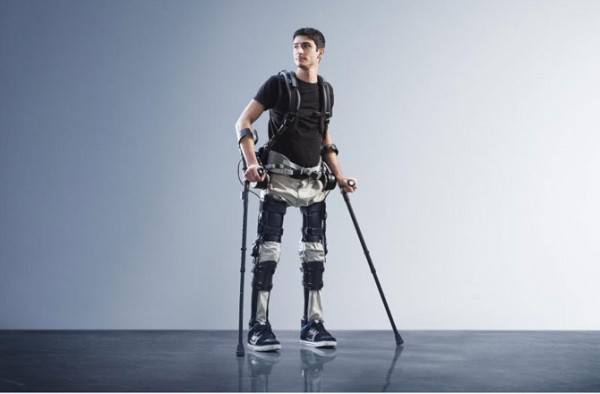By Steve Pak, | February 03, 2016

SuitX's Phoenix Exoskeleton
Robotic exoskeletons are helping patients who have been paralyzed since birth or after events such as car accidents, to take their first step forward and then walk again. The Phoenix robot suits developed by a research lab at University of California at Berkeley (UCB) are basically battery-powered wearable devices with hip and knee joints to power the user's movements.
Like Us on Facebook
Phoenix can help certain people to walk again. They include those with some kinds of paralysis and spinal injuries, according to Discovery.
Here is how it works. The robot suit has two motors including one on each hip, the motorized hip joints then move each leg in a forward direction, followed by the knee joints functioning as simple hinges.
Motorized knee joints are not required for the robotic suit because it was designed for slow walking on flat surfaces. However, the user must use crutches to keep the system stable.
A new version of the wearable robot was made available for order by SuitX on February 1, Monday. The California company is scheduled to deliver its experimental gadget next month.
Berkley-based SuitX is also known as US Bionics Lab. The company reports the 27-pound (12-kilogram) Phoenix suit can help paraplegics walk continuously for four hours at 11 miles per hour (17.7 km/hr), according to CNET.
Homayoon Kazerooni is the founder of SuitX and director of the Berkeley Robotics and Human Engineering Laboratory at UCB. He explains that the wearable robot's short battery life makes it most useful for medical centers and rehab clinics.
Wearable robots can have many medical uses. Stroke victims are using robotic arms to control their bodies again, amputees can get back the sense of feeling, and robotic legs help disabled people to walk.
The United States' Defense Advanced Research Projects Arm (DARPA) has also been developing robotic exoskeletons since the early 200s0 in order to build motorized armor for super soldiers.
However, Kazerooni points out that robotic suits have limits. For example, while the Phoenix machine helps paralyzed people to stand up and walk, their movements are robotic although people want to have smooth movements.
The price tag of the Phoenix Suit is cheaper than rival products. That includes ReWalk with a price tag around $70,000.
Here's a ReWalk robotic exoskelton user:
-
Use of Coronavirus Pandemic Drones Raises Privacy Concerns: Drones Spread Fear, Local Officials Say

-
Coronavirus Hampers The Delivery Of Lockheed Martin F-35 Stealth Fighters For 2020

-
Instagram Speeds Up Plans to Add Account Memorialization Feature Due to COVID-19 Deaths

-
NASA: Perseverance Plans to Bring 'Mars Rock' to Earth in 2031

-
600 Dead And 3,000 In The Hospital as Iranians Believed Drinking High-Concentrations of Alcohol Can Cure The Coronavirus

-
600 Dead And 3,000 In The Hospital as Iranians Believed Drinking High-Concentrations of Alcohol Can Cure The Coronavirus

-
COVID-19: Doctors, Nurses Use Virtual Reality to Learn New Skills in Treating Coronavirus Patients











